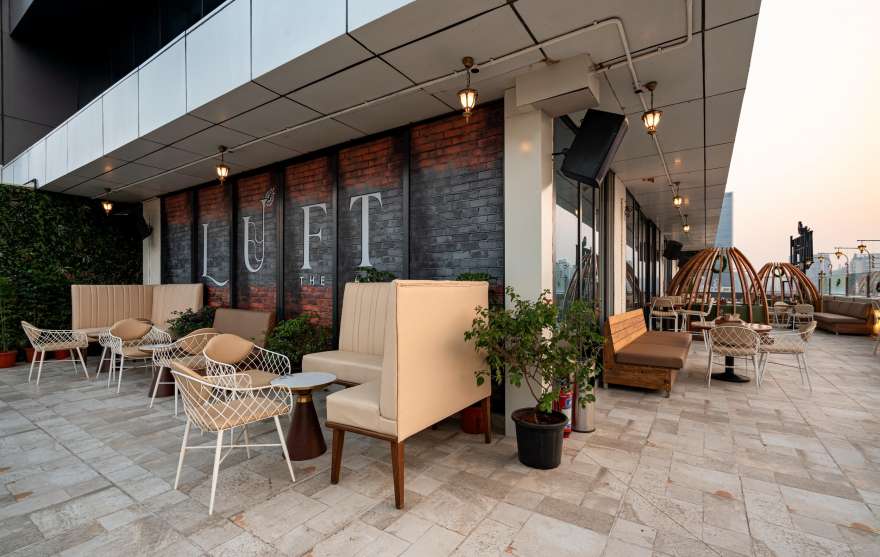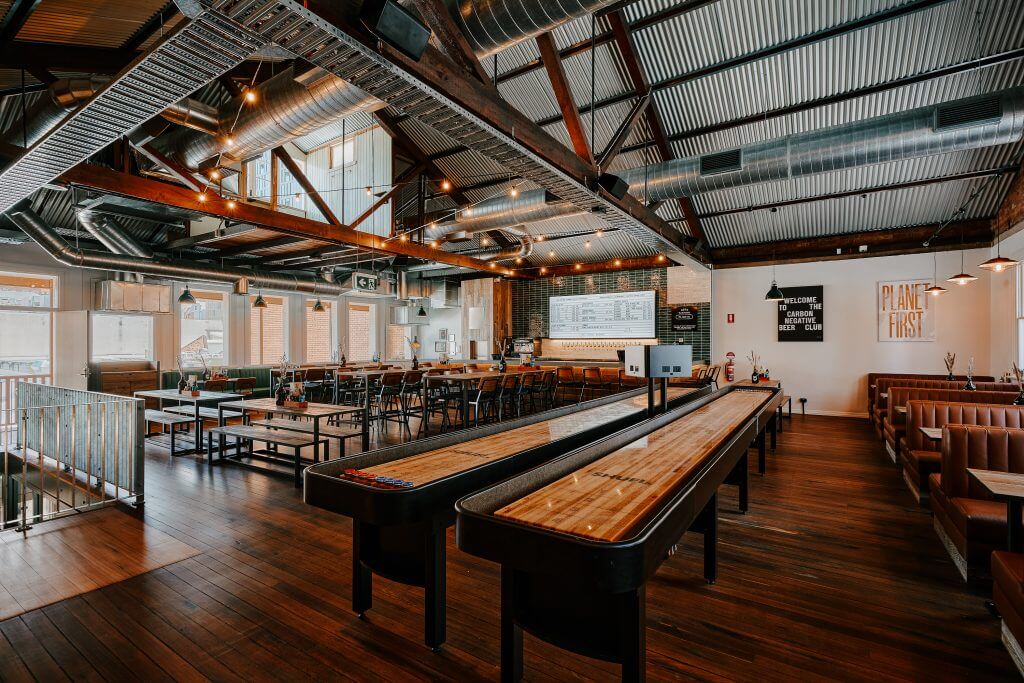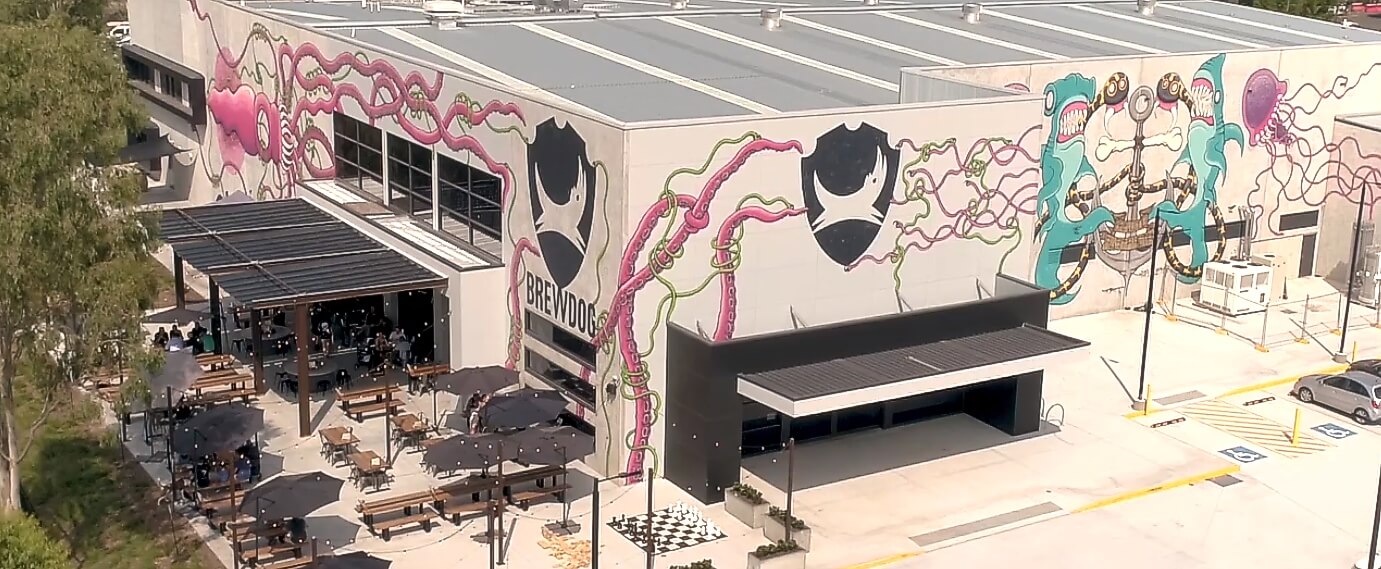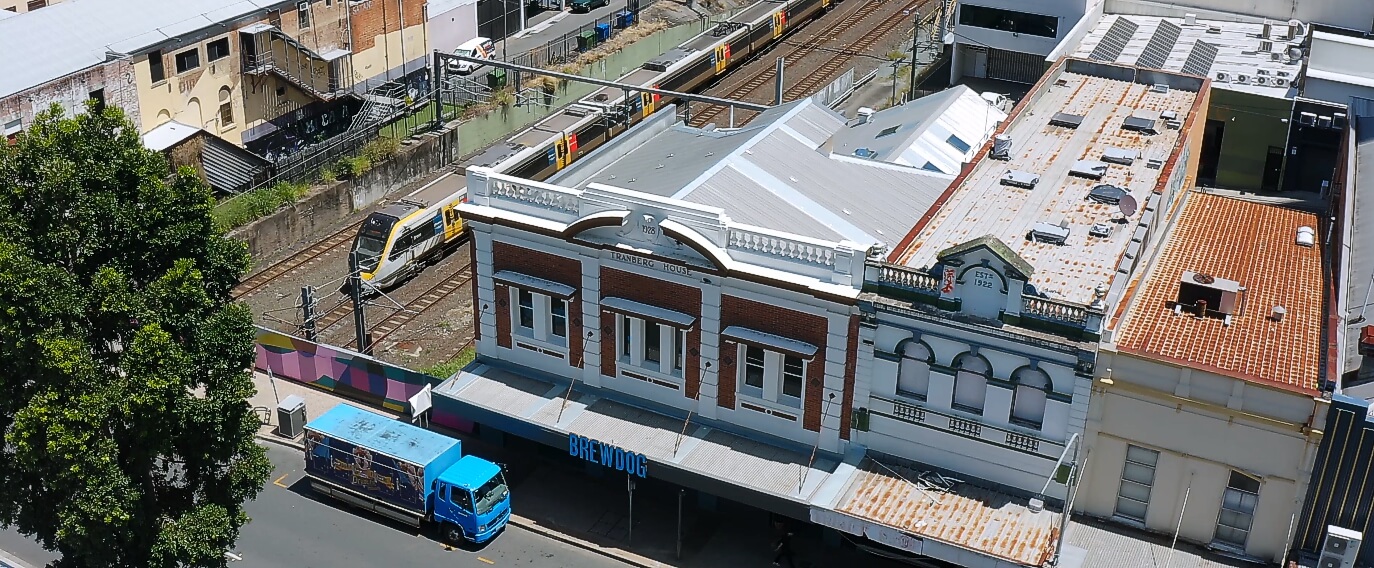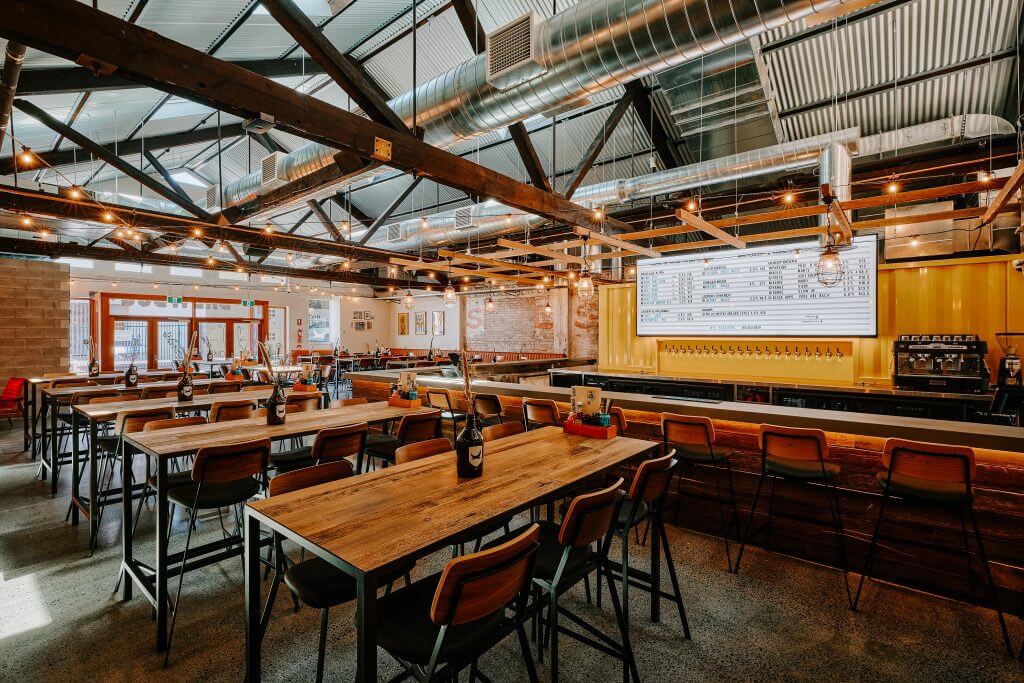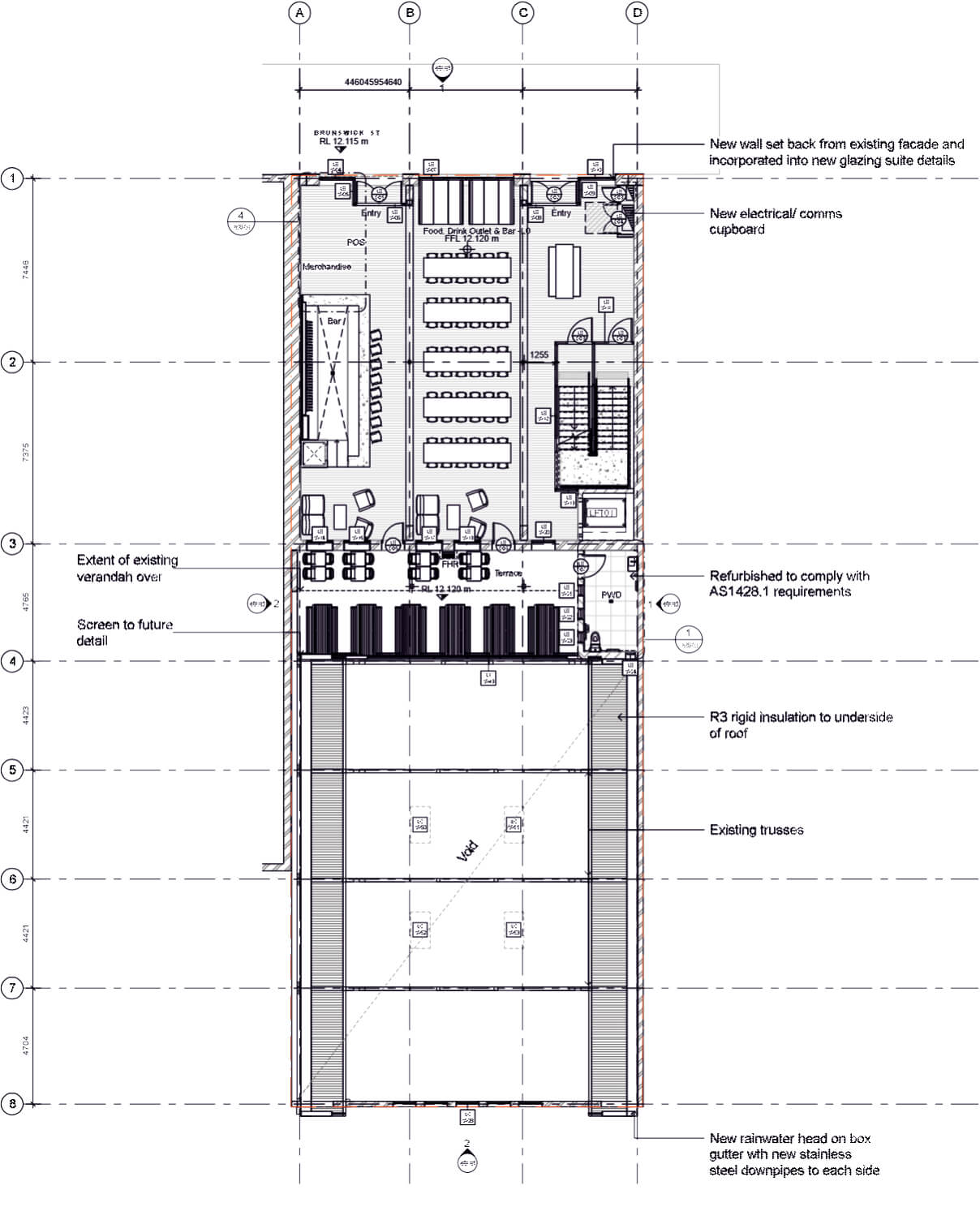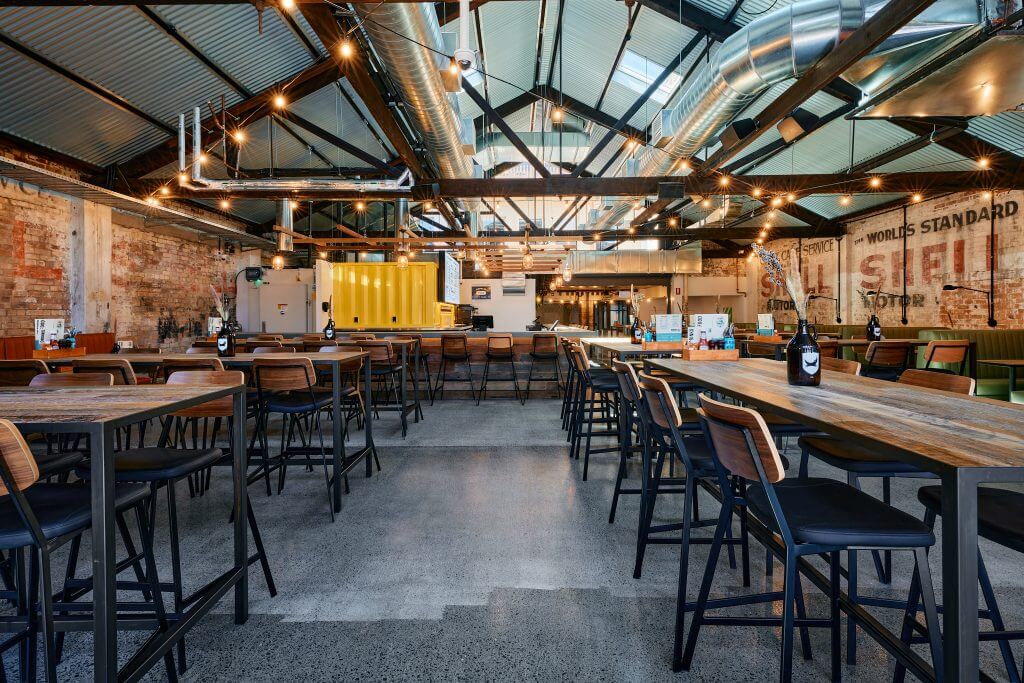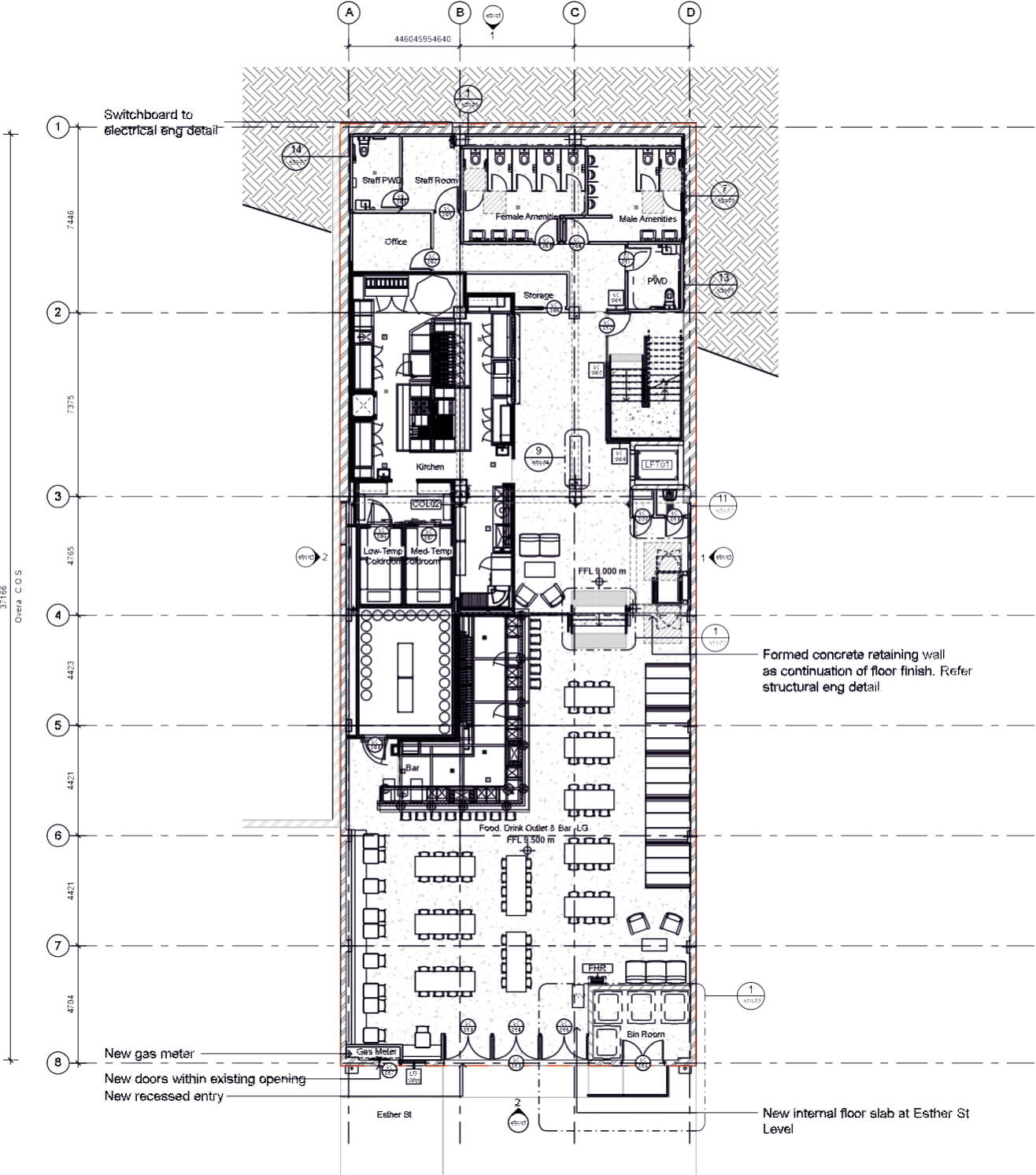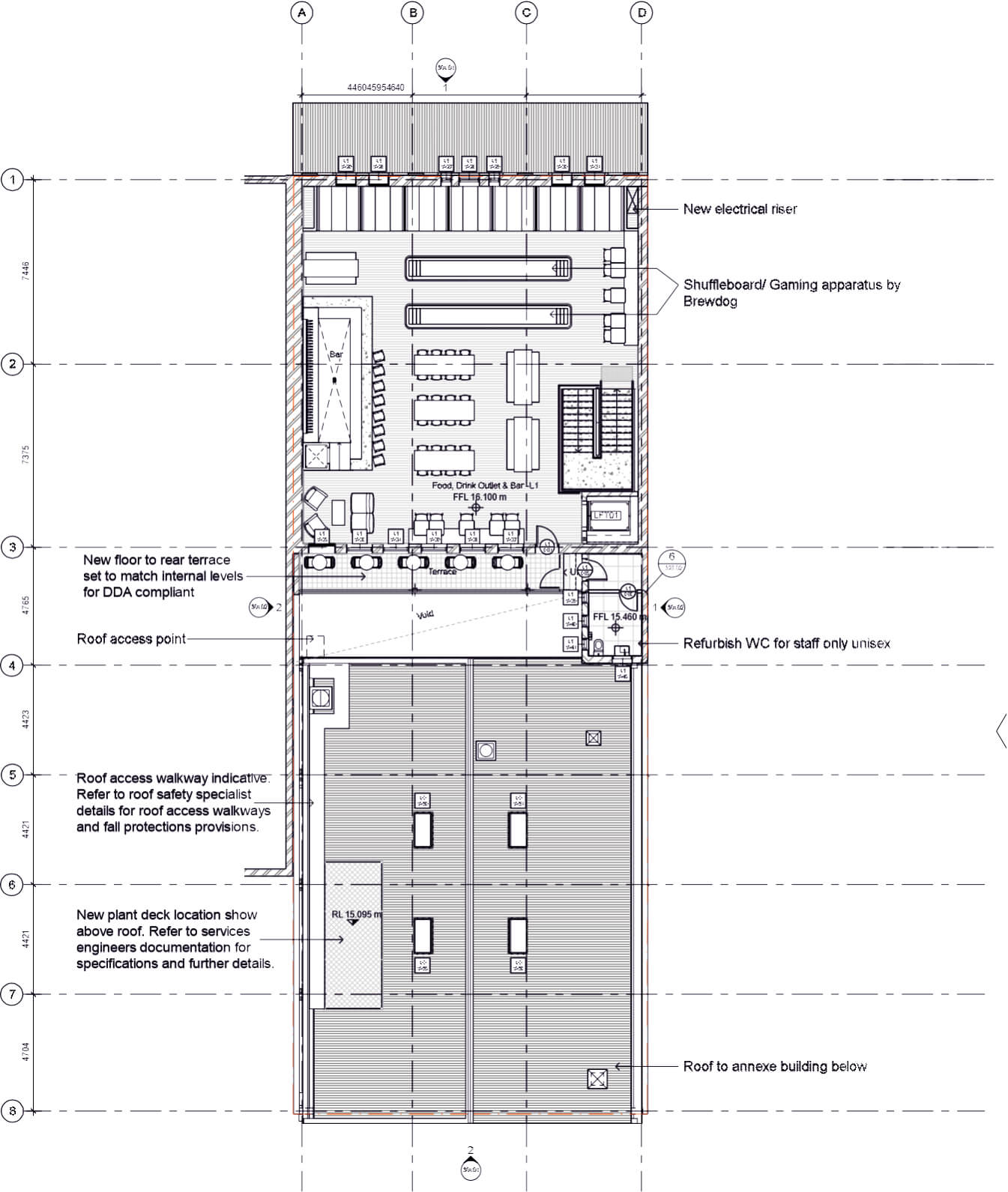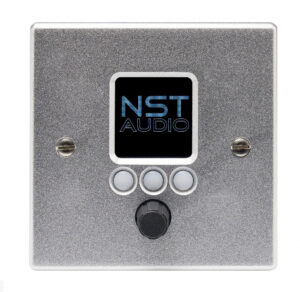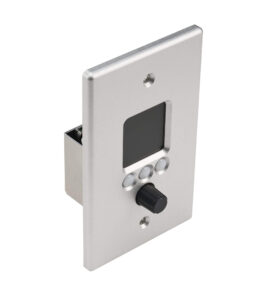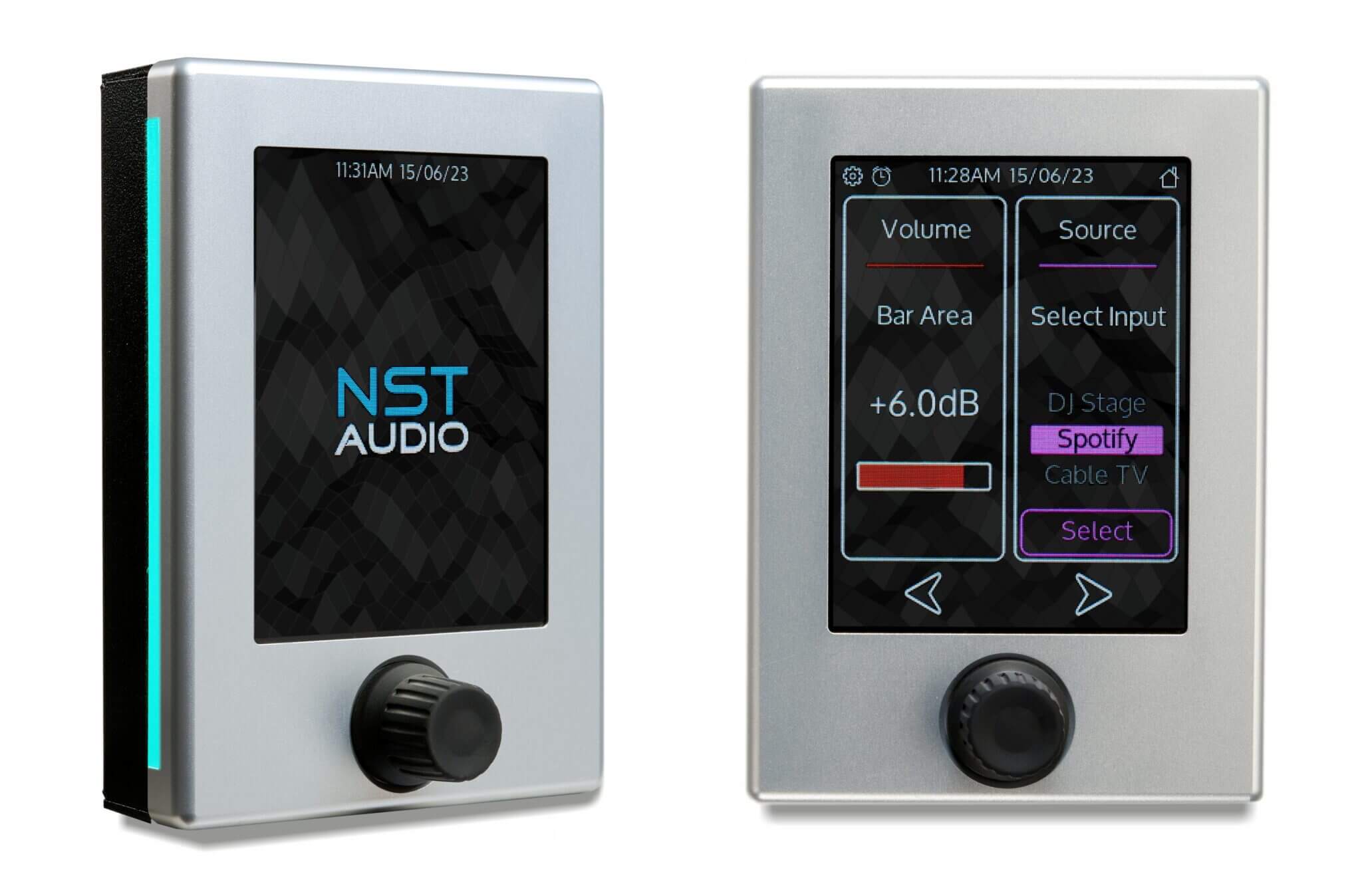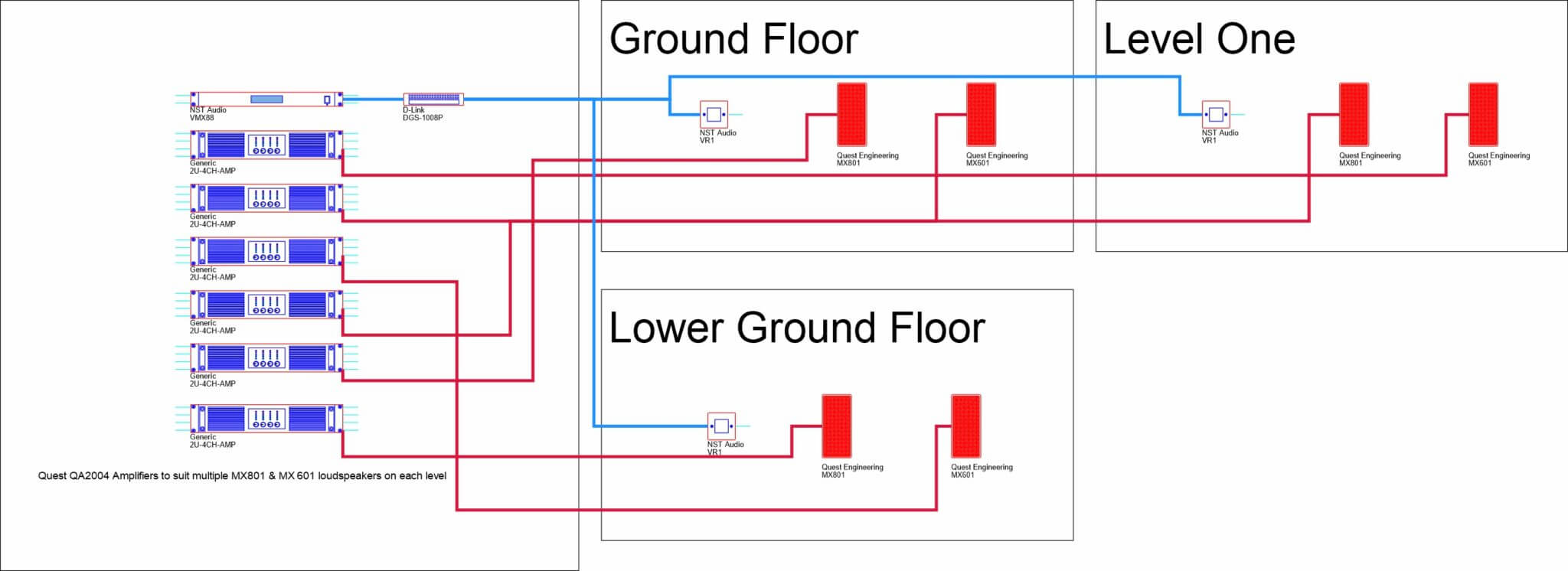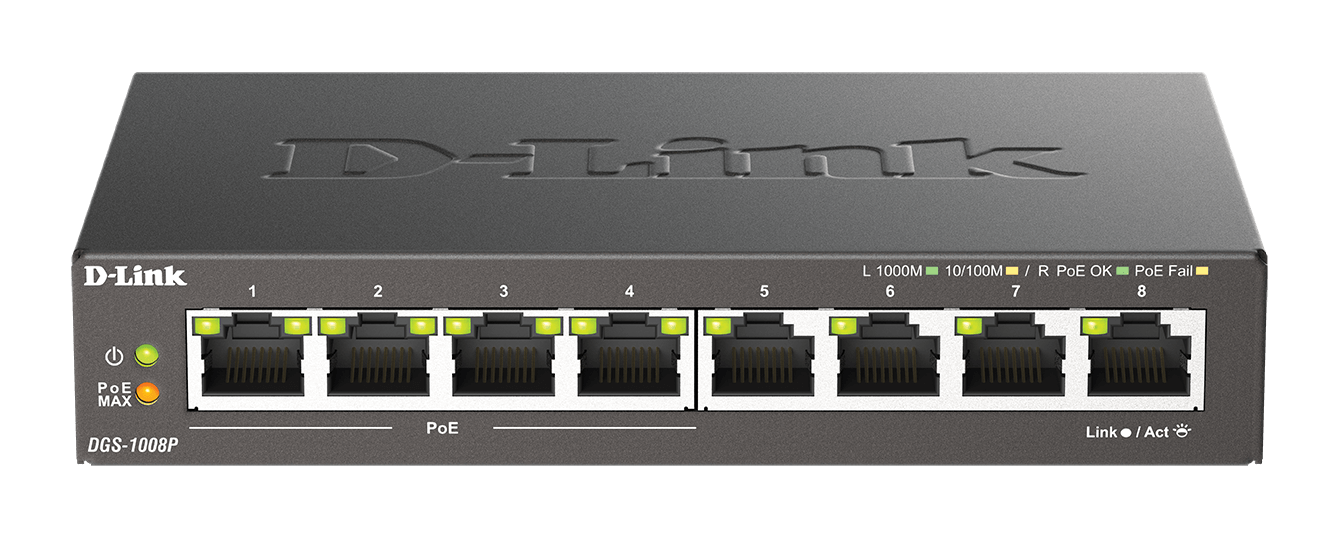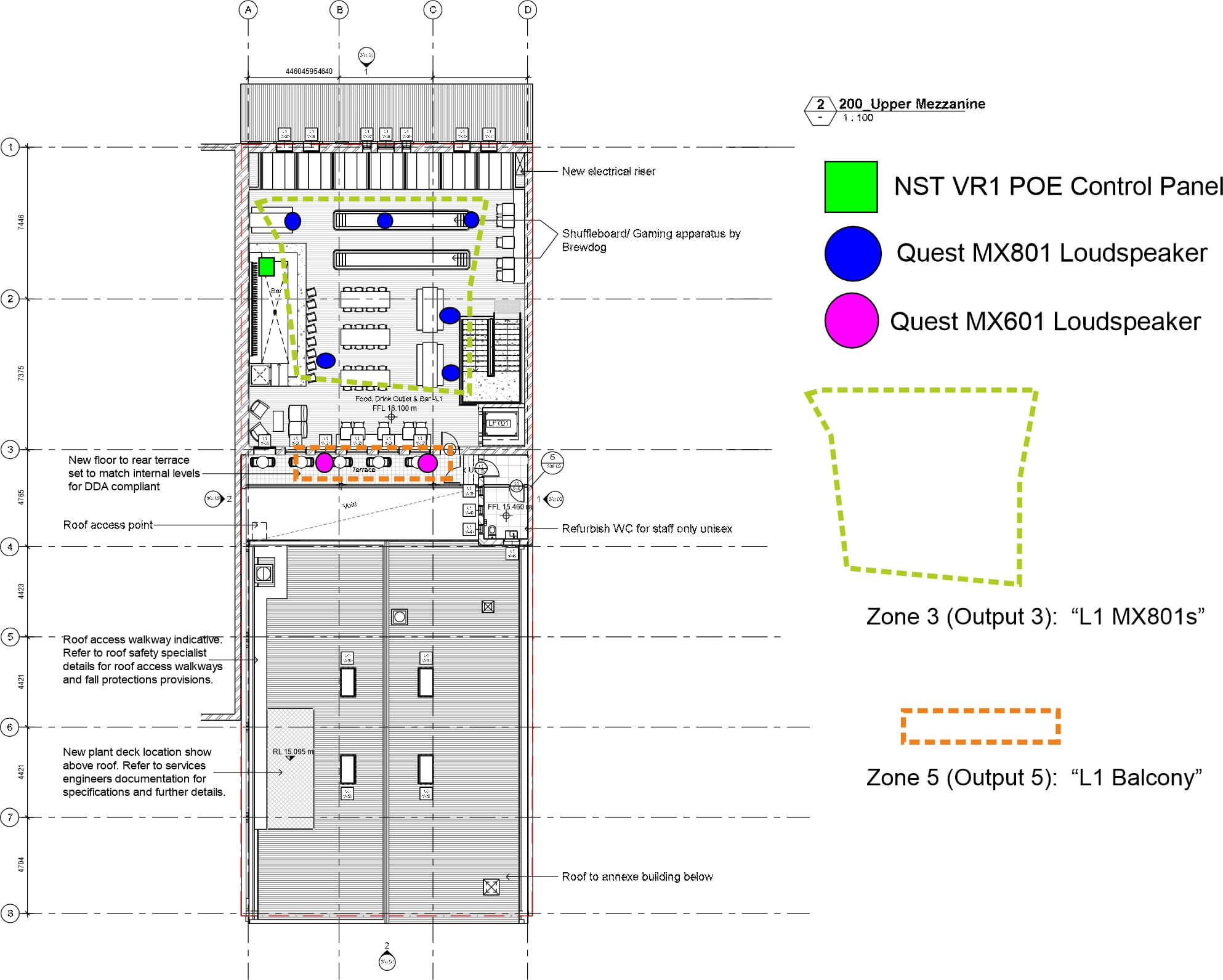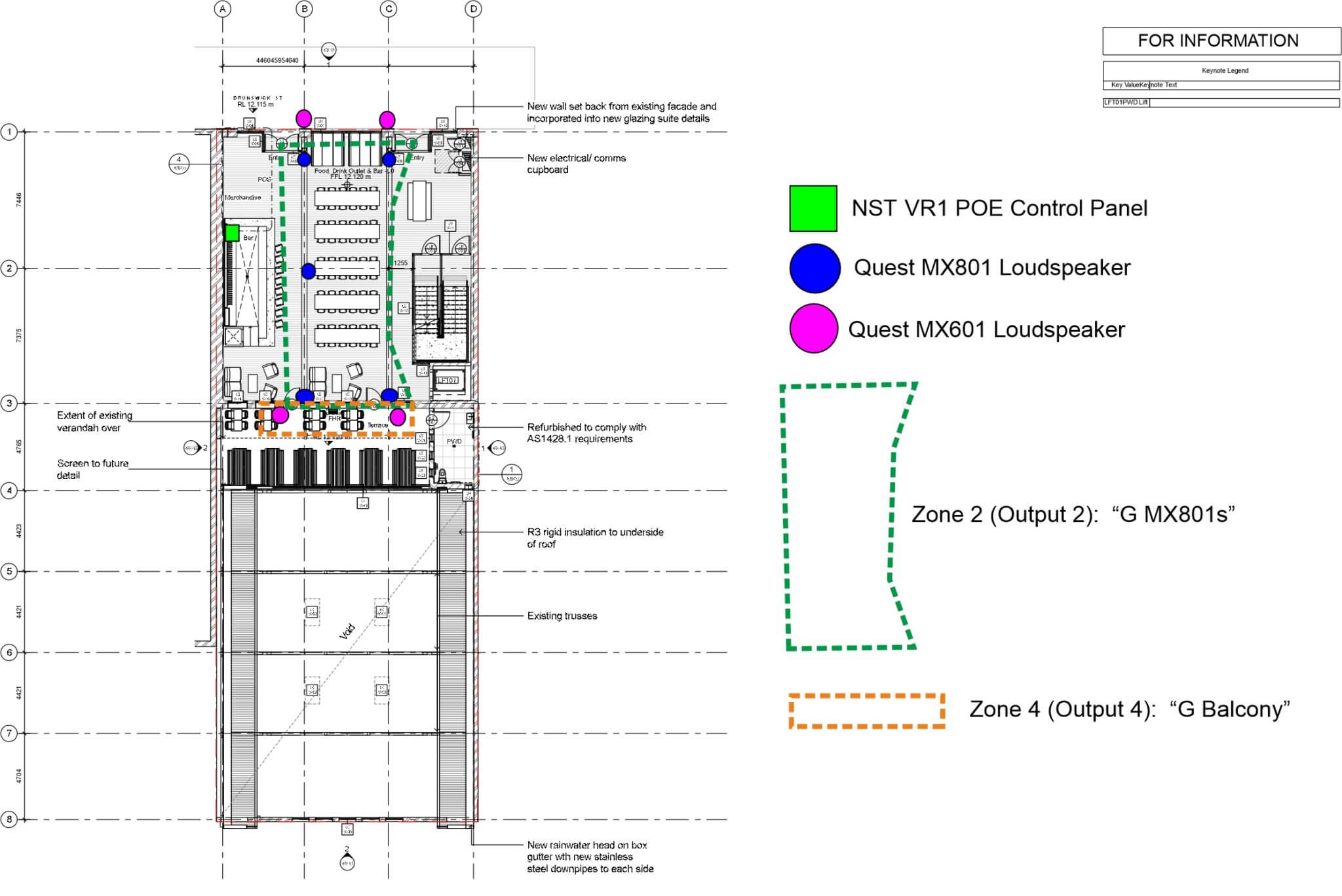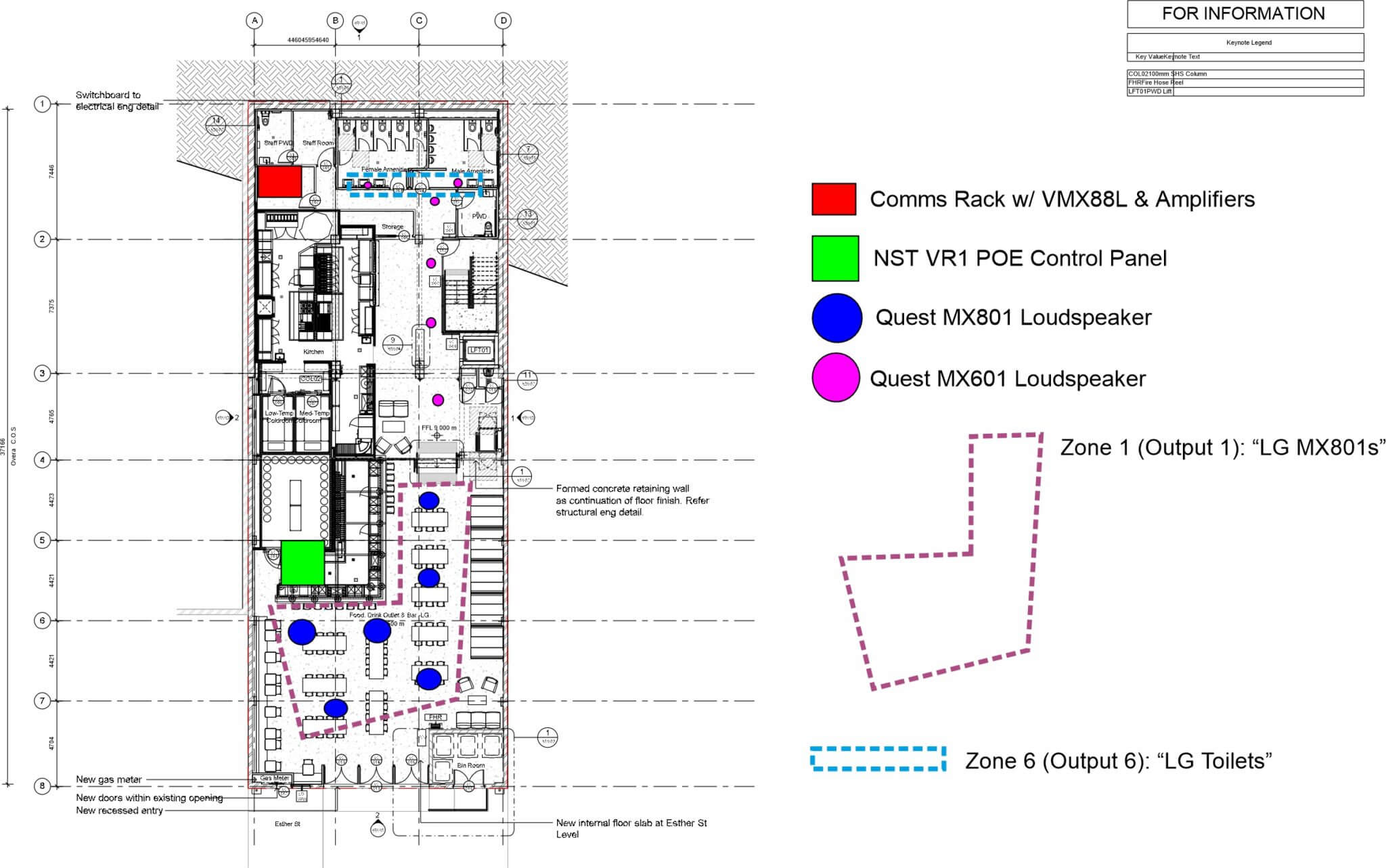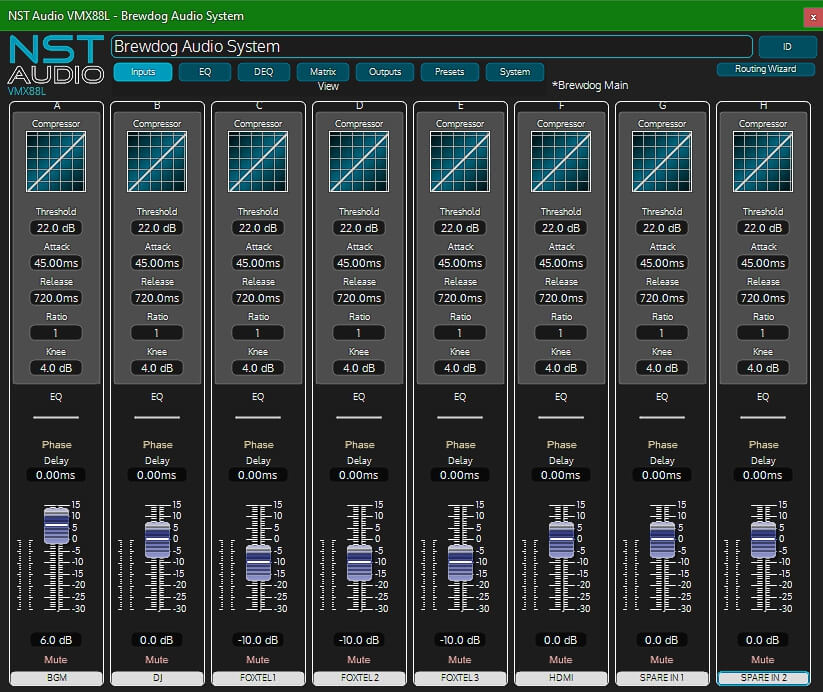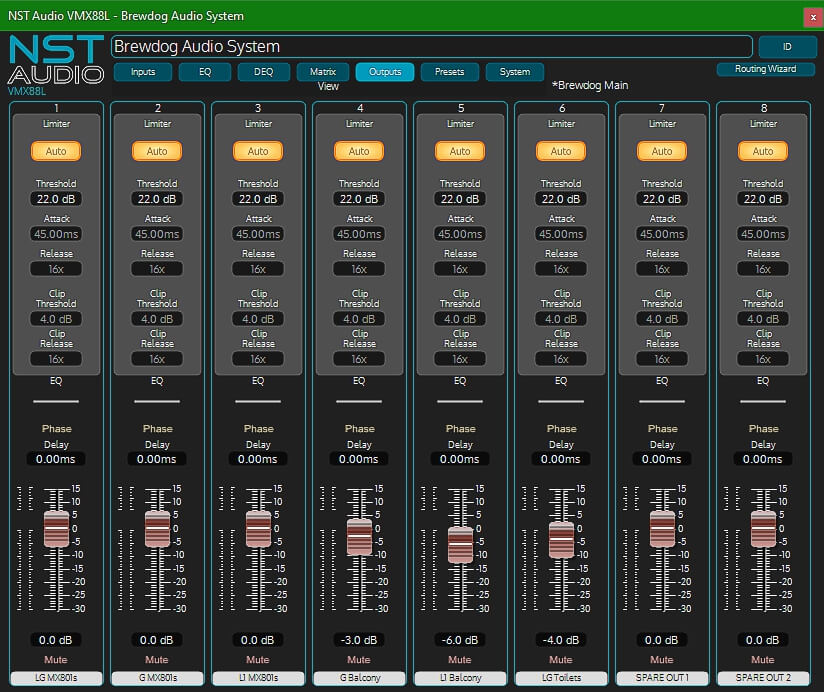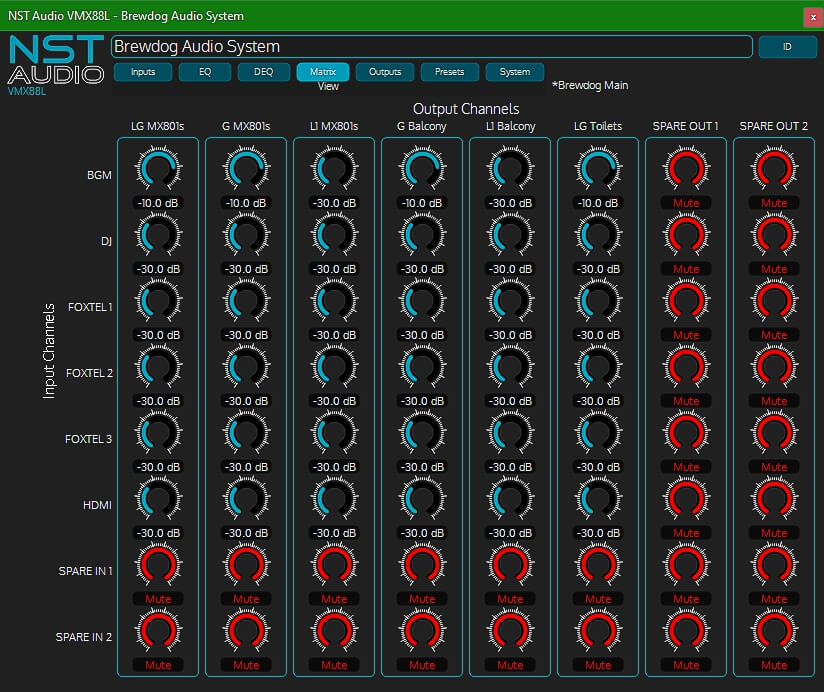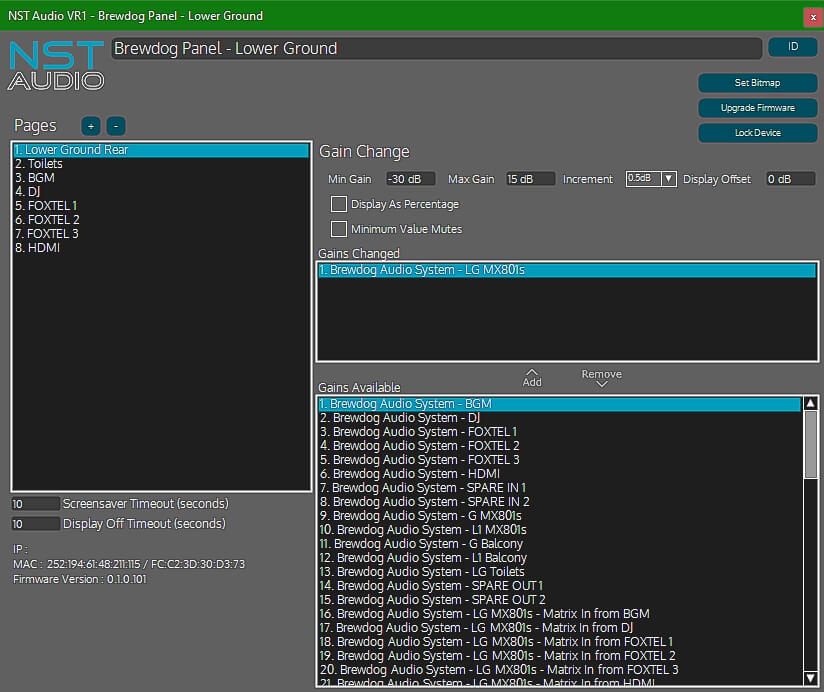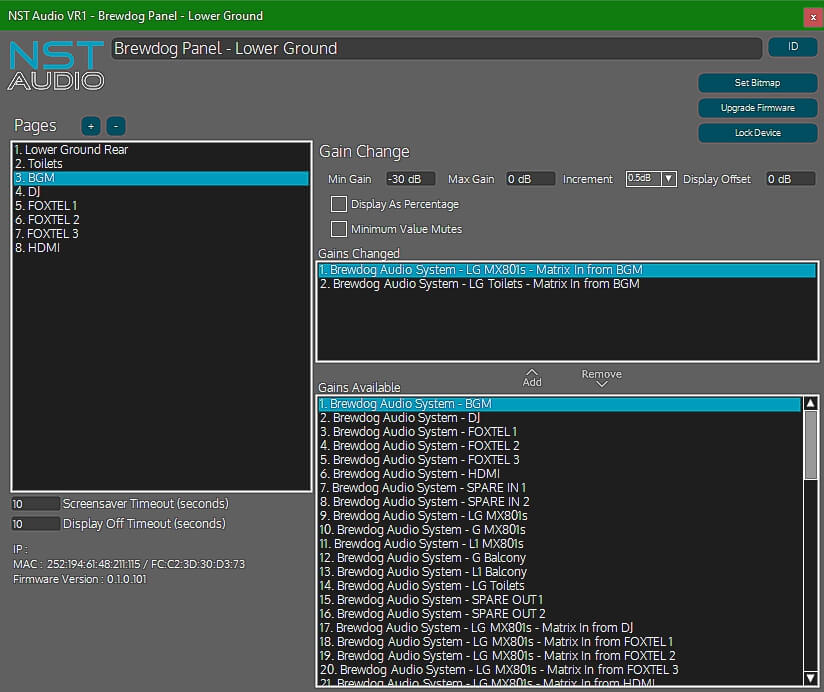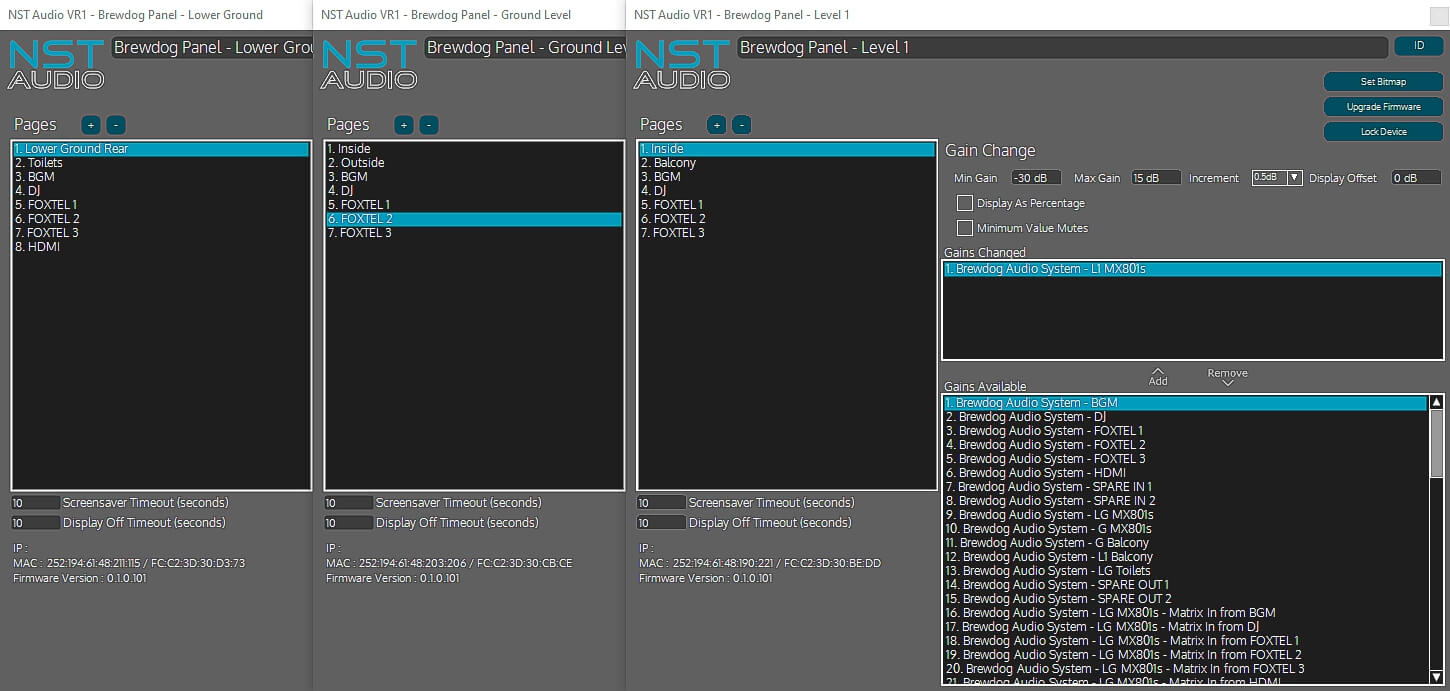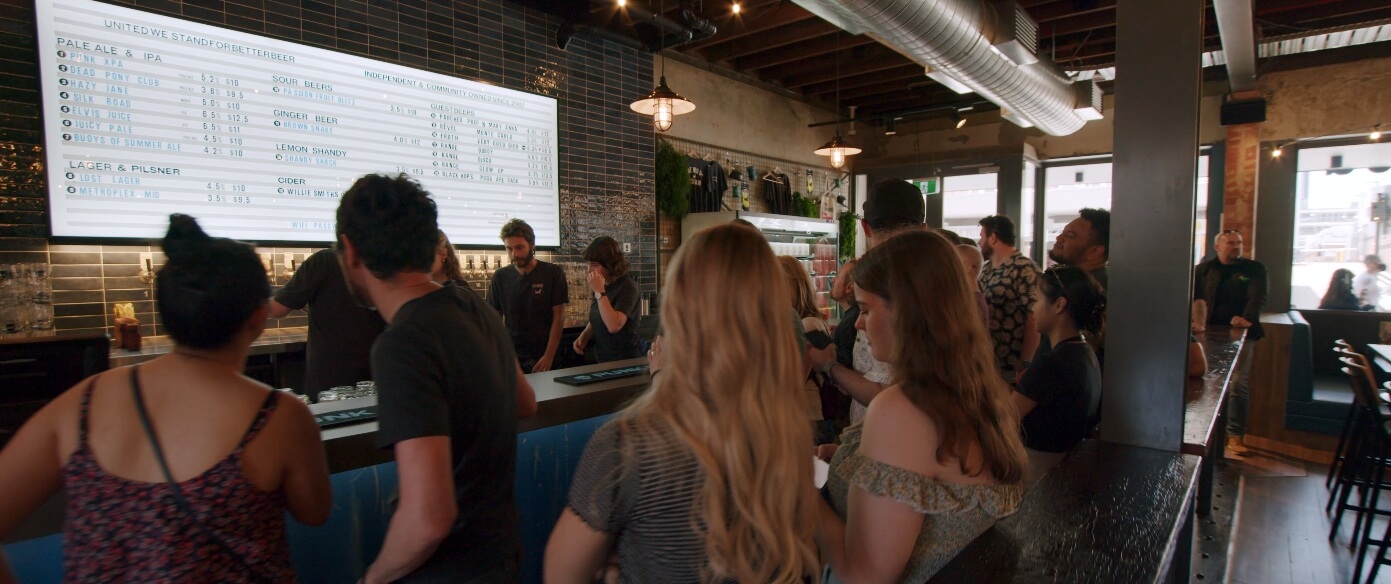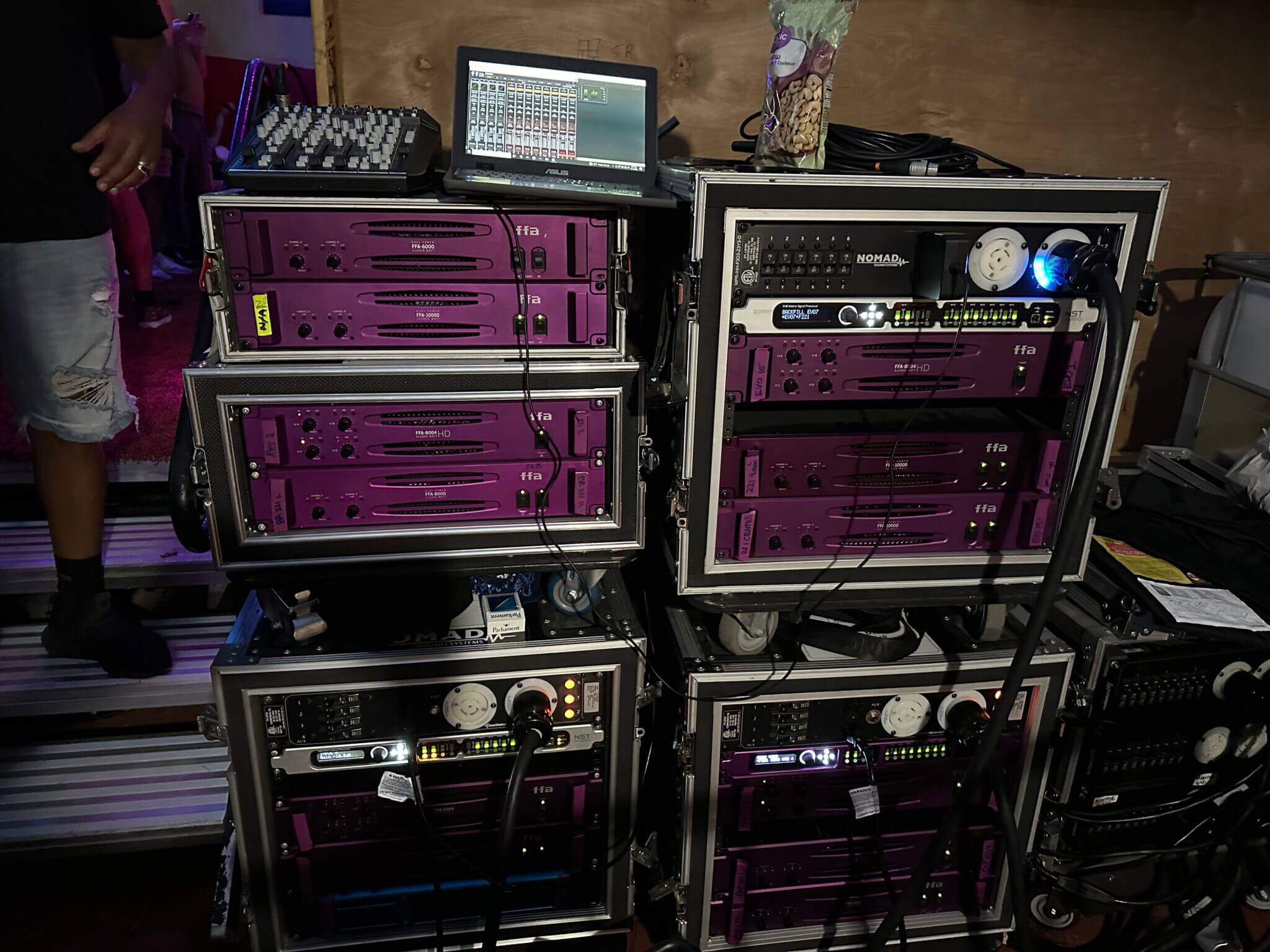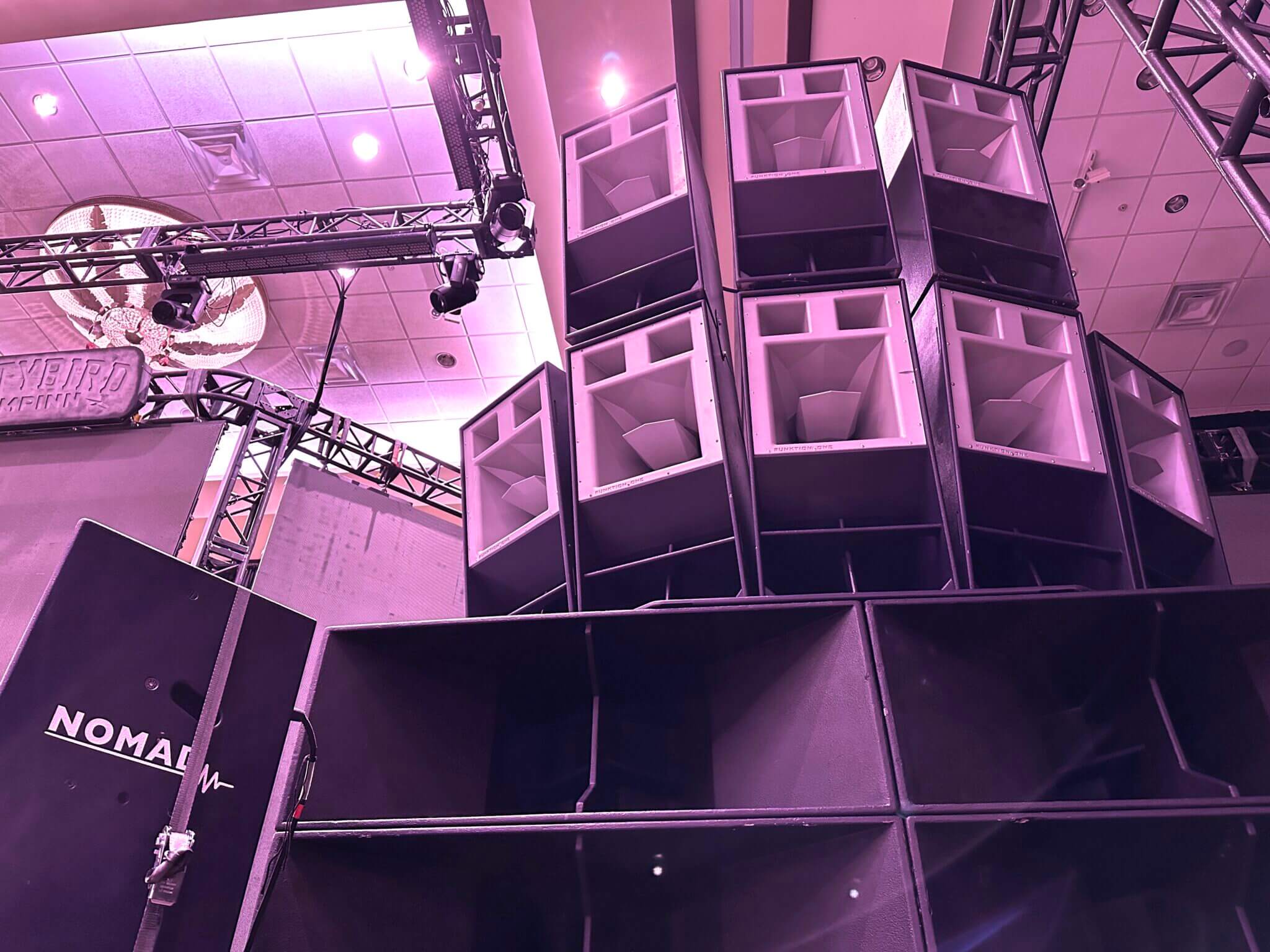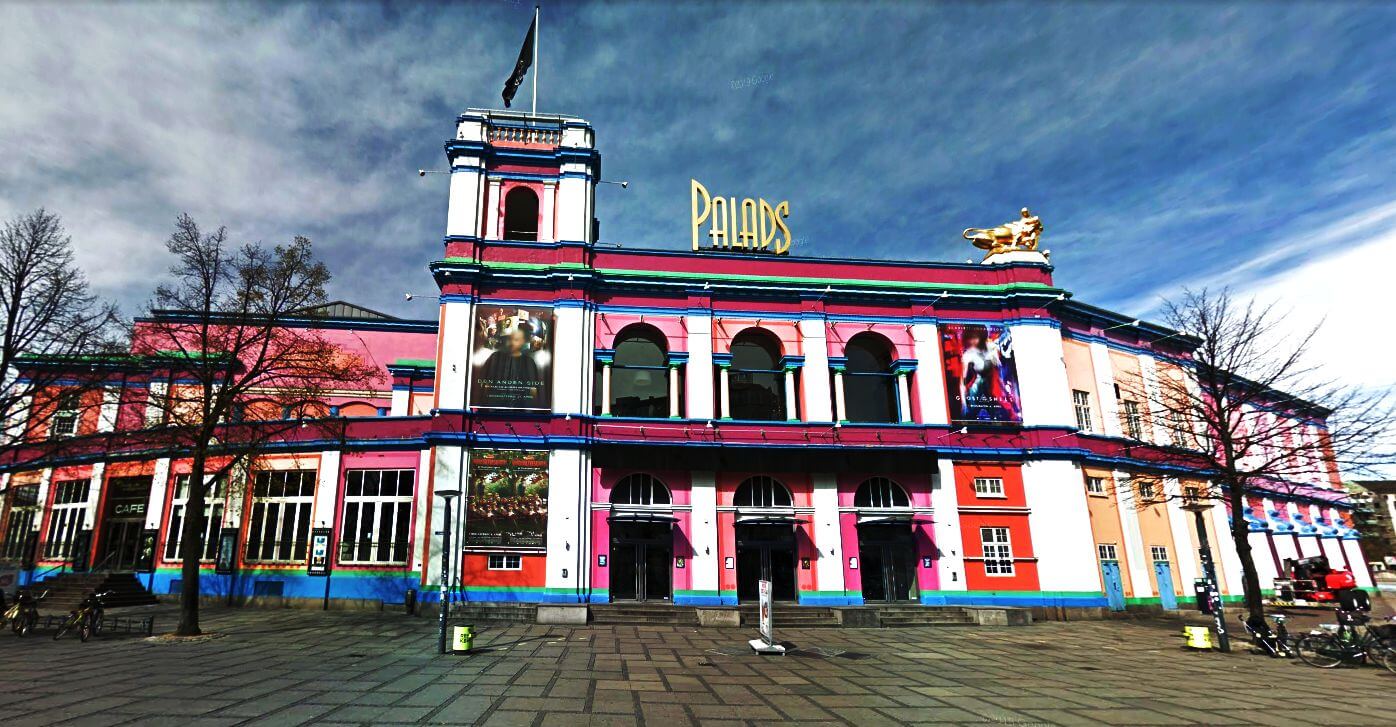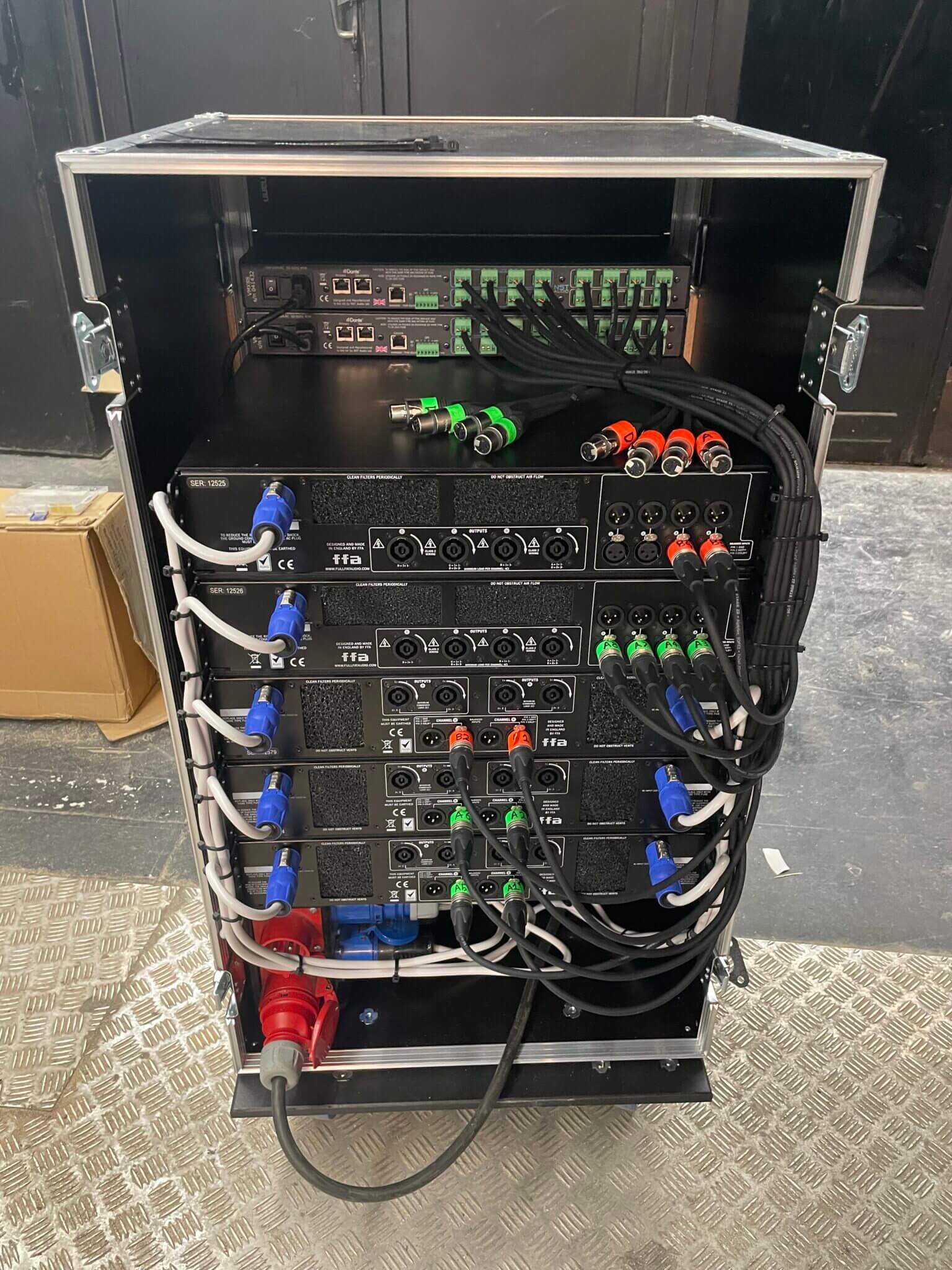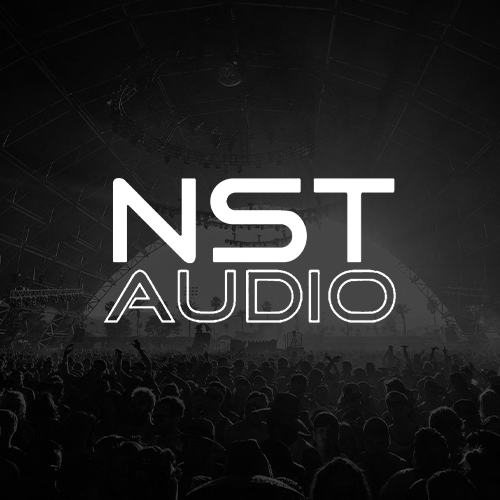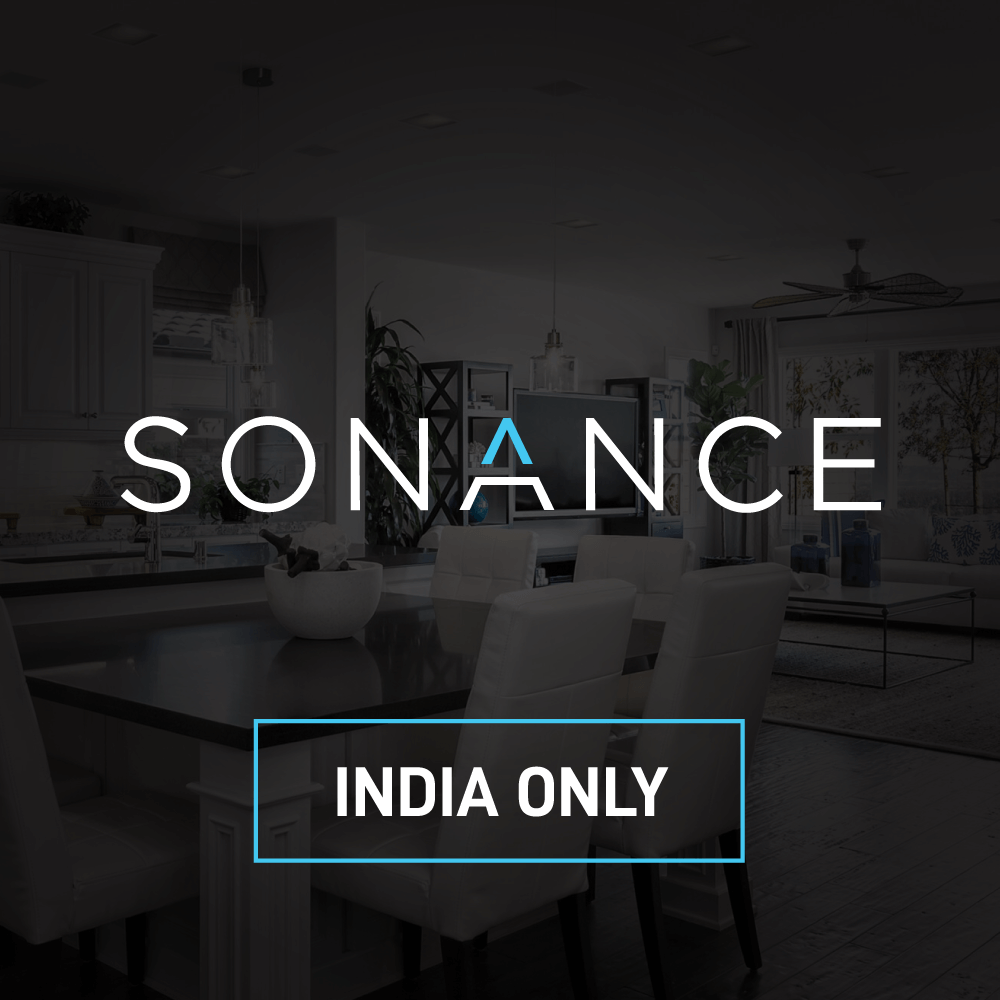India: Situated in the heart of the Andheri West entertainment district in Mumbai, the Luft – The Air bar features an Optimal Audio sound system, installed by Generation AV. Sitting amongst a collection of Bollywood studios and neighbouring the Yash Raj Films studios, the venue attracts a young crowd of Bollywood stars and aspiring actors.
When Luft – The Air changed ownership, the venue began a renovation project which included the installation of new sound systems to impress its patrons. Measuring approximately 5,000m2, with capacity for up to 1,500 people, the bar is split across three distinct zones which can be rented out for separate functions or combined into one space. It plays mostly DJ music, focusing on the techno and house genres, as well as hosts events such as Bollywood nights and a Sundown party.
With the owner specifying “British tonality”, Generation AV set up a demonstration of two British brands, including Optimal Audio. The team played a set of tracks supplied by the owner at Mumbai’s Gymkhana 91 Bar & Kitchen which features a newly installed Optimal Audio system.
“The owner loved the tone of Optimal,” noted Prashant Govindan, head of Generation AV India. “Within five seconds of hearing the system, he decided the brand was the right fit for his venue and asked if we could recreate the system for Luft – The Air.”
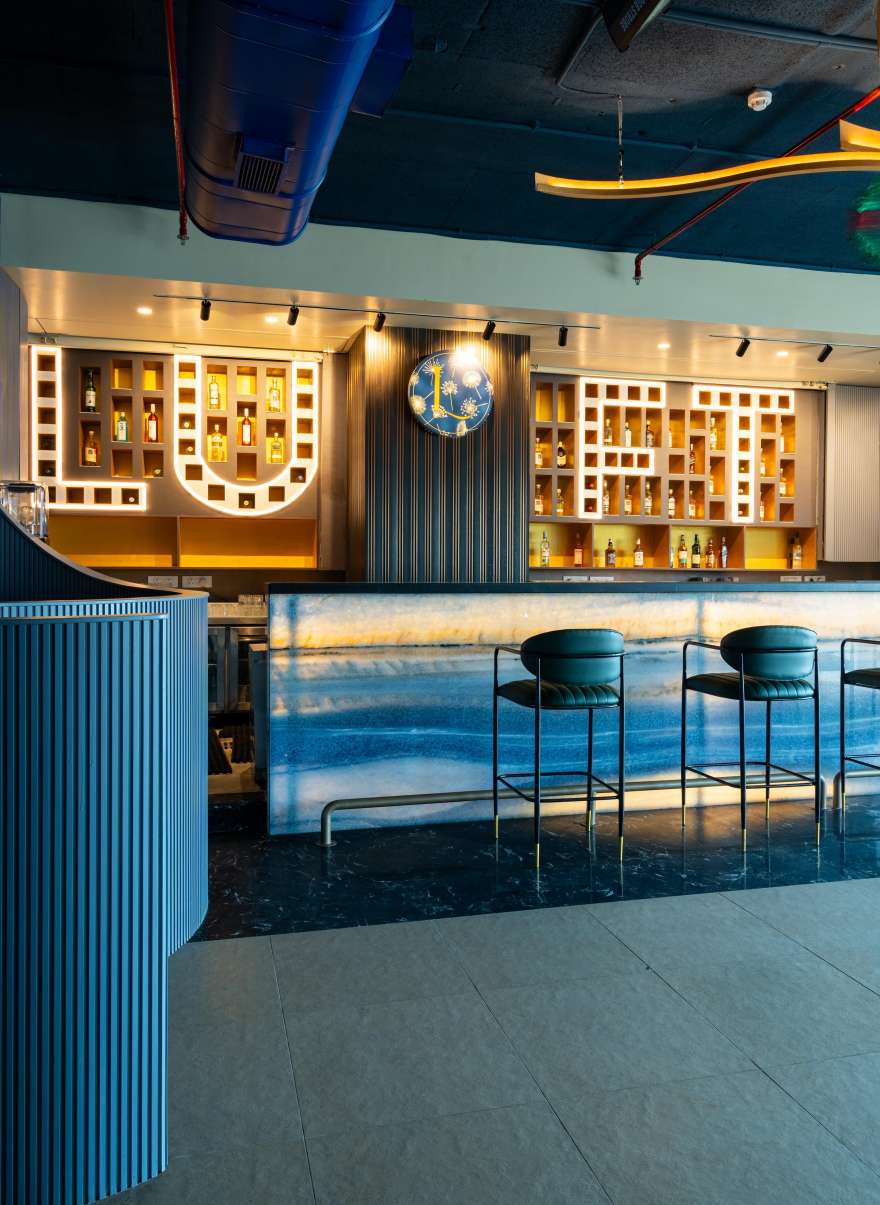
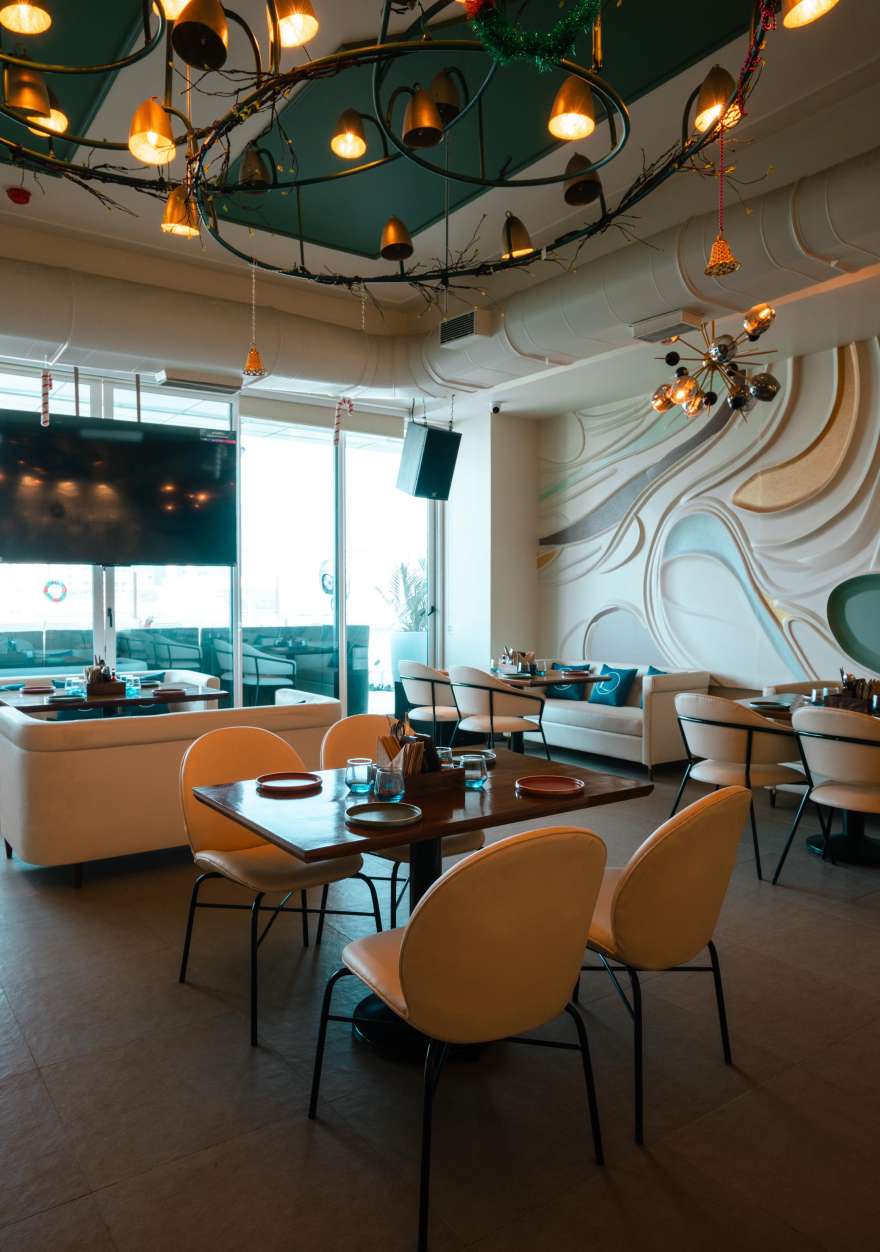
The venue has been outfitted with a three-way system featuring 20 Optimal Audio loudspeakers, including two Cuboid 15, four Cuboid 12, 10 Cuboid 10 and two Cuboid 8 loudspeakers for tops. This is complemented by two TNA2800S and four TNA1800S subwoofers from HH Audio for the low end. LEA amplifiers power the tops, with HH Audio amps deployed for the subs. NST Audio’s VMX 88 controls the entire system and all the DJ inputs are routed into the VMX 88. The entire setup can be intuitively controlled via an iPad or on a touchpanel, enabling staff to combine the three zones or separate them for different functions. Additionally, the NST Audio system features Dante processing and a 16 out option was implemented, enabling future expansion.

According to Govindan, the bar’s DJ, Goku, was one of the big influencers for choosing Optimal Audio. “Goku was very clear that he didn’t want to be messing around with knobs and fiddling around in settings,” said Govindan. “He liked the fact that, compared to analogue systems, with Optimal Audio everything is already preset.”
Another advantage offered is the LEA and NST Audio systems are completely automated and can be controlled from anywhere, meaning visiting DJs don’t need to know the intricacies of the system and can just “plug and play”.
“I visited the venue on the day it opened and, of course, Luft – The Air’s frequent customers from the Bollywood world go to a lot of parties,” noted Govindan. “While I was there, I spoke to a few people and they said that the system was by far the clearest sounding they had heard in Mumbai. For me that was a validation that the project was a success.
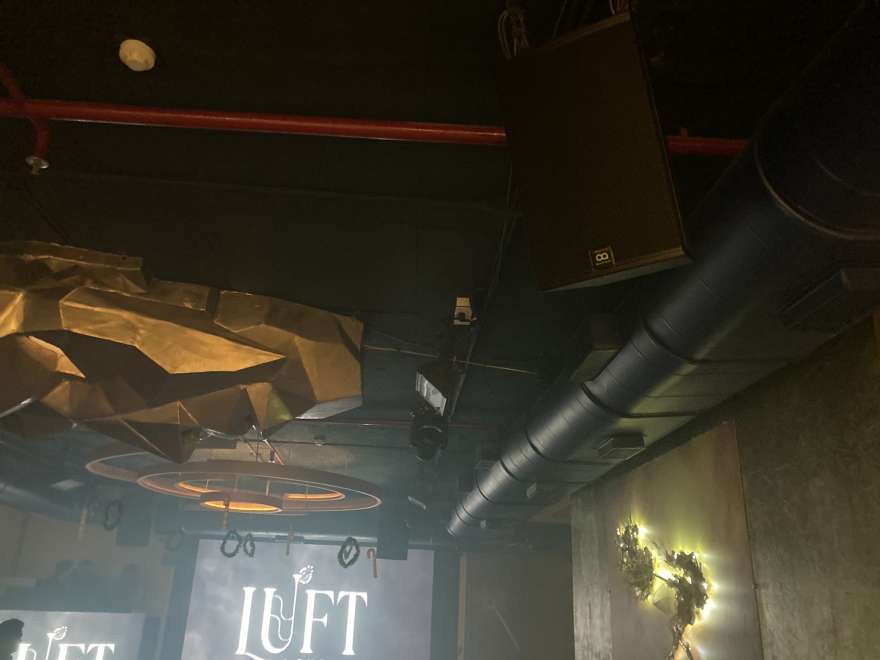
Click here for original article.

